Poles have been digging up precious metals and gems for centuries. Theirs is a mining country. In the 13th century, they discovered salt in the town of Wieliczka (veal-LETS-kuh), just to the east of Krakow. For centuries it would make the region one of the richest in all of Europe.
Today, with a package of table salt costing us pennies, it’s hard to imagine the worth of salt to medieval Europeans. People then didn’t value salt as a seasoning; its real value was as a preservative. Without refrigeration, salt was the primary way to preserve foods. At some points throughout history, salt’s value has rivaled that of gold. An ounce of gold might look pretty, but it doesn’t keep your family fed through winter.
When the salt vein of Wieliczka was discovered, unsurprisingly it came under the control of the monarchy, as do the most precious of natural resources. The Royal mine operated continuously from the 13th century until just 2007 producing only one thing: table salt. That’s not entirely correct, as it’s also been a major tourist attraction for the last century or so. And for those diligently following our blogs, yes, Wieliczka Salt Mine is a UNESCO World Heritage Site.
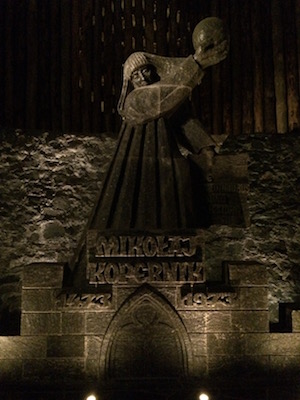
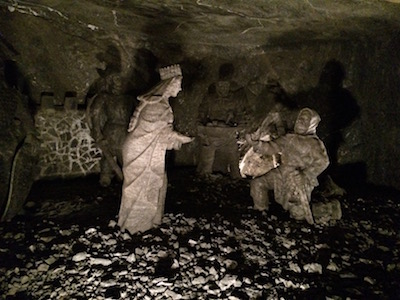
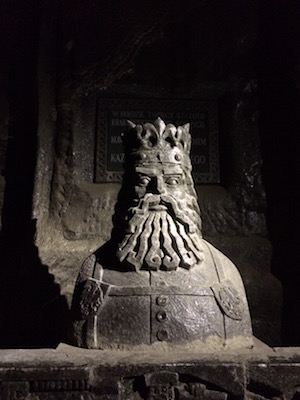
That an extensive underground complex (depths of over 1,000 feet and 178 miles of tunnels) attracts spelunking interest isn’t overly surprising, but what makes Wieliczka truly remarkable—and undoubtedly earns that UNESCO designation—is the artistry found throughout the mine system. That’s right, artistry. Mineworkers through the centuries, often some of the monarchy’s most prized and valued laborers, usually very well treated1 but working in incredibly harsh and dangerous conditions2, carved figures in the salt. Salt statues of respected kings and queens, legendary and literary figures, mining dwarves ala Tolkien, medallions and intricate doorways, are found throughout the mine.
The salt statuary are impressive enough, but there are also entire chambers carved into the mine. There are at least four chapels where the devout Catholic Poles attended daily mass before beginning work. One is a massive chamber, still the site of weekly mass for locals and tourists, complete with altar and ambo, scenes from the life of Jesus, and a life-sized statue of Poland’s favorite pope.
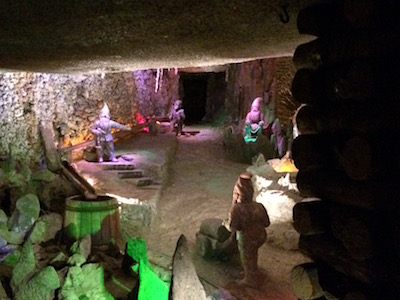

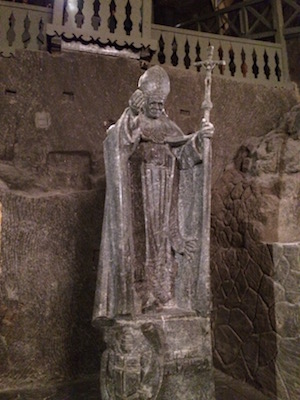
Also worth mentioning is the woodwork throughout the mine. The massive timbers arranged in intricate framing and bracing structures to hold up the chambers and provide a framework for beautifully constructed staircases simply makes you say “wow”.
The Wieliczka Salt Mine is a must-see destination in southwest Poland. If you visit Krakow, a tour to the salt mine is practically mandatory. It is not for the faint of heart: tours enter the mine by descending a shaft of 800+ steps. It seems you descend forever and your shins will ache by the time you gratefully reach the bottom. But then you are told you are only about halfway as deep as the mine goes. For much of the tour you fret over the grueling climb out, but I’ll alleviate your fears: you return by elevator.
At one point, our guide assured us that the walls of the mine were indeed salt. You’re even encouraged to lick the wall and see for yourself. Don’t worry, no bacteria can live on the salt. I can confirm for you the walls are indeed salt; Lori and many others just take my word for it.
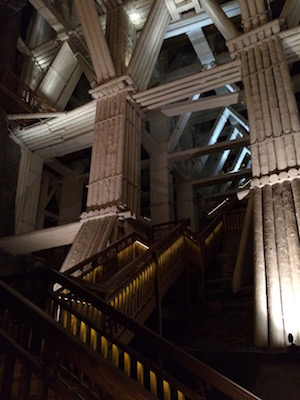
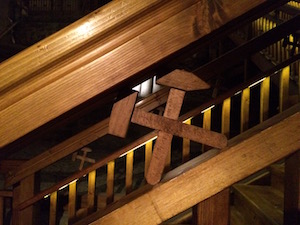
Footnotes
1 – Miners were often allowed to take home a small chunk of salt, akin to allowing gold miners to take home a little nugget of gold every day.
2 – Collapses were not uncommon, and morning work began with designated workers with torches having to burn out methane, often explosively, that accumulated near the ceilings.






